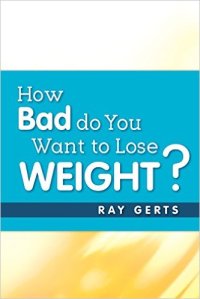Using the weight of your own body to create resistance was one of the earliest forms of strength training. It's easy to learn, effective, and you can do it just about anywhere.
Although you can get quite inventive, the following exercises are the primary bodyweight exercises and how to do them. It's a somewhat fine distinction, but the core resistance bodyweight exercises are not the same as calisthenics, stretching, plyometrics or most yoga exercises (in my opinion anyway), although they may include elements of all these disciplines.
The exercises form the core of any bodyweight workout program. Many others are variations and trivial modifications.
Push-ups
The push-up is a classic bodyweight exercise, and it demonstrates quite clearly the principle of bodyweight resistance training.
Lie face down on the floor, preferably on a firm carpet or mat or rubber surface, with feet together.
Place your hands on the floor at shoulder level, facing forward. Keep a slight bubble in the hands and fingers, rather than positioning them flat on the hard surface.
Raise your body up on the hands and toes until elbows are nearly straight, then lower to a point where the elbow is at a right angle. Don't let your body touch the floor.
One "up and down" is one push-up repetition. Don't go too fast or too slow. Keep the head and neck steady.
Do as many as you can in one minute, rest, then try again. Rest your knees on the ground if you find the exercise difficult when you first start out.
The push-up develops strength in the chest, shoulders and the triceps muscles of the upper arms.
Place your hands on the floor at shoulder level, facing forward. Keep a slight bubble in the hands and fingers, rather than positioning them flat on the hard surface.
Raise your body up on the hands and toes until elbows are nearly straight, then lower to a point where the elbow is at a right angle. Don't let your body touch the floor.
One "up and down" is one push-up repetition. Don't go too fast or too slow. Keep the head and neck steady.
Do as many as you can in one minute, rest, then try again. Rest your knees on the ground if you find the exercise difficult when you first start out.
The push-up develops strength in the chest, shoulders and the triceps muscles of the upper arms.
Variations include resting knees on the floor, using a wide or narrow hand position and using one arm to perform the push-up motion (for the tough guys and girls).
The Squat
The squat without weights may seem easy, but once you get up around the 20 rep mark it starts to take a toll on the knees, upper legs, and butt until you build some condition. I do a flat footed squat, but some prefer to do the squat on their toes.
Here's how it goes:
Stand with feet about shoulder width apart. Keep hands on your hips, crossed over the chest, held out in front, or at your sides. I like the hands out in front because it allows you to settle back a little into the squat and put some emphasis on the butt muscles and hamstrings.
Keeping the back straight, bend the knees and squat down until your knees are at approximately 90 degrees (a right angle).
Push up to the starting position and repeat. The squat develops legs and butt muscles and, over time, may strengthen knee joints. However, be cautious with this exercise if you have an existing knee injury or feel knee pain at any stage in the workout.
Start with 3 sets of 10 repetitions.
Keeping the back straight, bend the knees and squat down until your knees are at approximately 90 degrees (a right angle).
Push up to the starting position and repeat. The squat develops legs and butt muscles and, over time, may strengthen knee joints. However, be cautious with this exercise if you have an existing knee injury or feel knee pain at any stage in the workout.
Start with 3 sets of 10 repetitions.
Lunges
The lunge is a fundamental bodyweight exercise. Done in sets of 8 or more (each leg), lunges provide strength, balance, and flexibility training. You can see how to perform the lunge in this example of a weighted lunge.
Options include a variety of arm positions -- at the sides, straight out in front, raised at each side, crossed at the chest or straight up overhead.
Try them all, as each arm position provides a slightly different emphasis and perhaps level of difficulty. For example, the arms raised at the sides provides better balance and stability than arms crossed at the chest.
Other more advanced options include the backward lunge and the 45-degree angle side lunge.
Crunches
Crunches are a key exercise for strengthening the abdominal muscles. Many different types of crunches are possible. Some of the best are:
Standard crunch, in which the shoulders are raised off the floor while you contract the abs
Reverse crunch, in which the legs and knees are raised off the floor while you contract the abs
Combo crunch, which is a combination of both of the above
Bicycle crunch, which includes all of the above and you peddle the legs in the air as well.
Reverse crunch, in which the legs and knees are raised off the floor while you contract the abs
Combo crunch, which is a combination of both of the above
Bicycle crunch, which includes all of the above and you peddle the legs in the air as well.
Dips
Dips are performed with a chair or bench. You can also use a special machine at the gym that helps you. These are called "assisted dips." These instructions are for the standard dip from a bench:
Make sure you select a secure bench or chair that will not slide from under you. I use a kitchen chair and I push it against the wall to prevent slipping.
Sit on a bench or chair and slide your butt forward off the bench so that you are supporting your whole body weight on your hands, with your butt hanging and your feet on the ground.
Lower your body down until the elbow is at about 90 degrees (a right angle). Don't go below this, as the shoulder joint can get in a position that may not be safe for some people.
You can start out with the legs bent at about 90 degrees and your feet more or less flat on the floor, then extend them out as you get stronger until your "dipping" on your heels with your feet stretched out in front of you.
Sit on a bench or chair and slide your butt forward off the bench so that you are supporting your whole body weight on your hands, with your butt hanging and your feet on the ground.
Lower your body down until the elbow is at about 90 degrees (a right angle). Don't go below this, as the shoulder joint can get in a position that may not be safe for some people.
You can start out with the legs bent at about 90 degrees and your feet more or less flat on the floor, then extend them out as you get stronger until your "dipping" on your heels with your feet stretched out in front of you.
Some people believe you have to exercise to lose weight and it will help, but you can't sweat off pounds and expect them to stay off. Only a change in your diet will create permanent weight loss.
If you really want to lose your body fat than look for my Ebook at the websites listed below. You'll get information on Healthy eating, exercise, and diet.
“How Bad Do You Want To Lose Weight?”, is available at all the online bookstores selling for $1.99. Go to any of the websites and search the title to find my Ebook. This book gives you all you need to lose weight without spending money on gym memberships, diet plans or meal plans. Look for my book. at Amazon.com, B&N.com, iBooks, Kobo.com, Scribd.com, or Gardner Books in the U.K.




